Winter fairy tale on the Red Planet or what we know about the Martian winter (7 photos)
Beautiful icy landscapes, severe frost and cube-shaped snowflakes - all this happens not on Earth, but on Mars 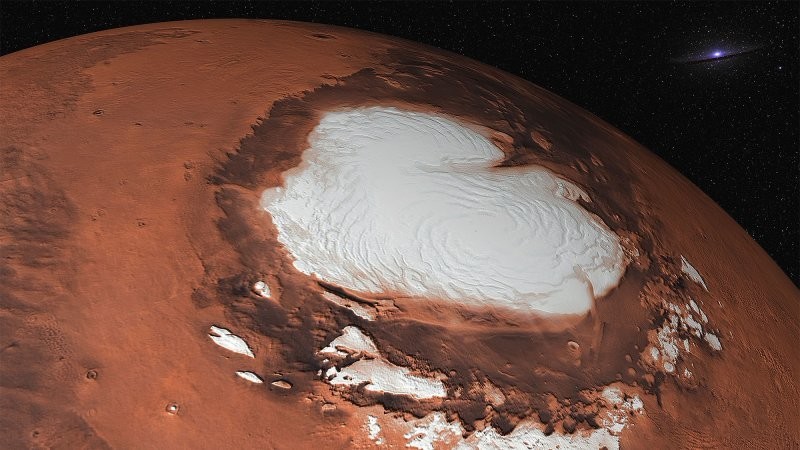
In this article I will talk about what scientists managed to find out about the coldest period on our red neighbor. So, let's begin. 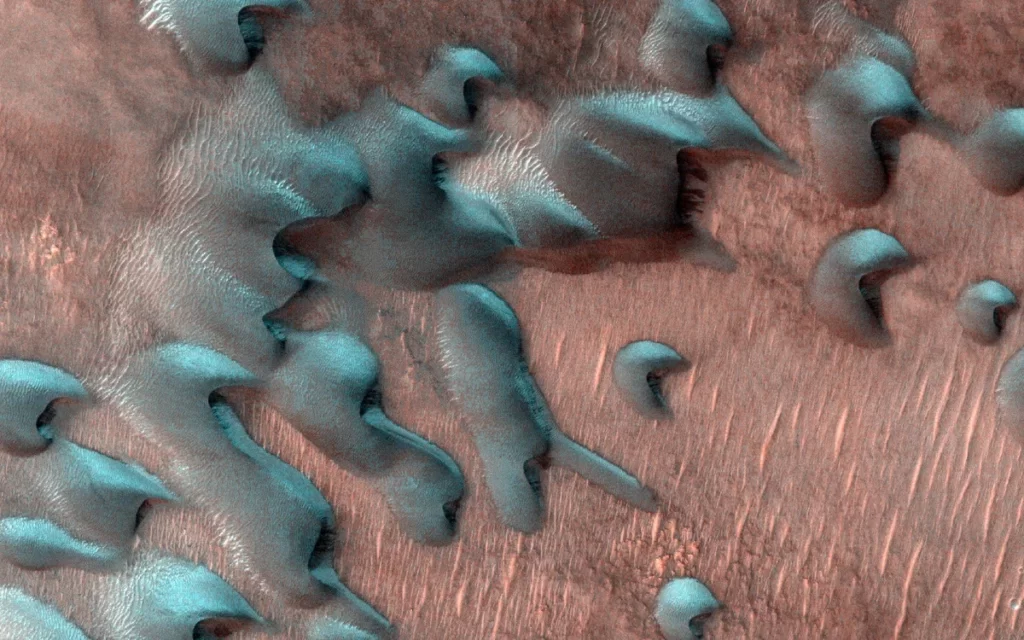
HiRISE camera aboard the Mars Reconnaissance NASA orbiter took these images of sand dunes, covered with frost, just after the winter solstice. Hoarfrost is here is a mixture of carbon dioxide (dry ice and water ice) and disappear in a few months: NASA/JPL-Caltech/University of Arizona.
So, on Mars, as on Earth, the seasons change, but since the Red Planet is further from the Sun, and its orbit has elliptical shape, then one Martian year is approximately equal to two Earth years, which means that the winter on Mars lasts almost twice as long.
At the same time, the temperature can drop to really low -123 degrees Celsius, snow also falls and forms ice. But don't expect snow drifts. The greatest thickness of the snow cover can barely exceed a couple - three centimeters.
But at the same time, Mars boasts two types of snow at once. 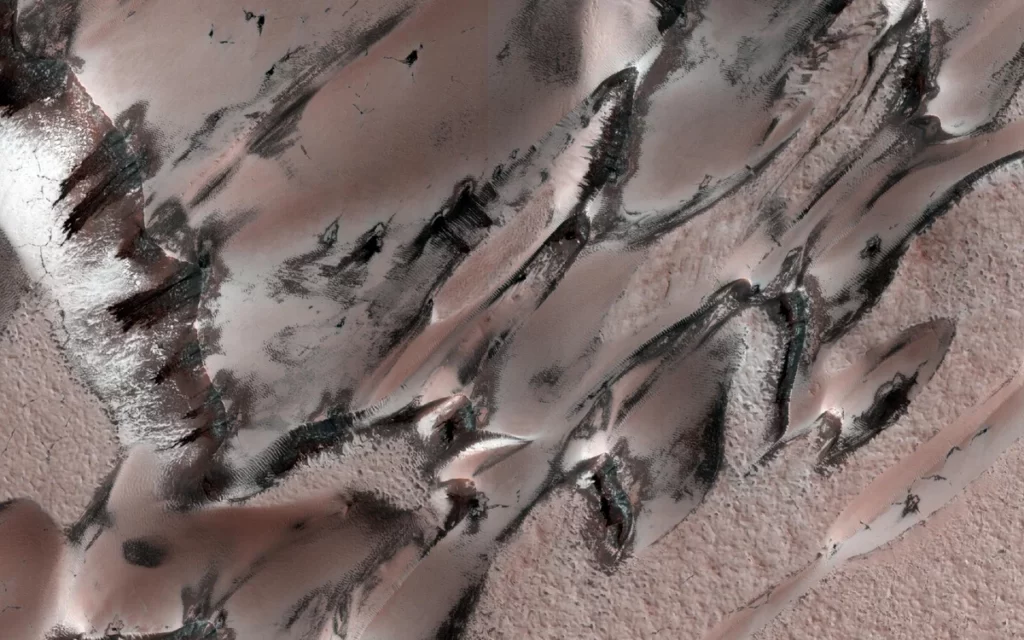
HiRISE photographed these "megadunes", also called dunes. in winter hoarfrost and ice formed from carbon dioxide over the dunes; when in the spring begins to sublimate, revealing darker dune sand. Photo: NASA/JPL-Caltech/University of Arizona.
So, scientists say that snow falls on the Red Planet two types at once: classic, consisting of frozen water, and dry ice from carbon dioxide.
Since the Martian atmosphere is highly rarefied, and in winter the temperature is so low, the snow from the water ice sublimates or however, it transforms into a gas even before it reaches the surface. AND here the dry ice snow actually reaches the surface.
But it accumulates mainly in craters or on mountain peaks (in crevices).
How do we even know it's snowing there?
This is a very good question. After all, it snows on Mars only in its coldest parts: at the poles, under cloud cover and often at night.
The cameras located on the orbiting ships are unable to "see" through the clouds, and ground vehicles are not able to function in such extreme conditions.
So there is still no photo of anyone walking on Mars. snow. But scientists are convinced that it still goes, due to the work special scientific instruments.
The Mars Climate Sounder, located on the orbital spacecraft Mars Reconnaissance Orbiter, is quite capable look through the clouds, as it captures light at wavelengths, which are not visible to the human eye. 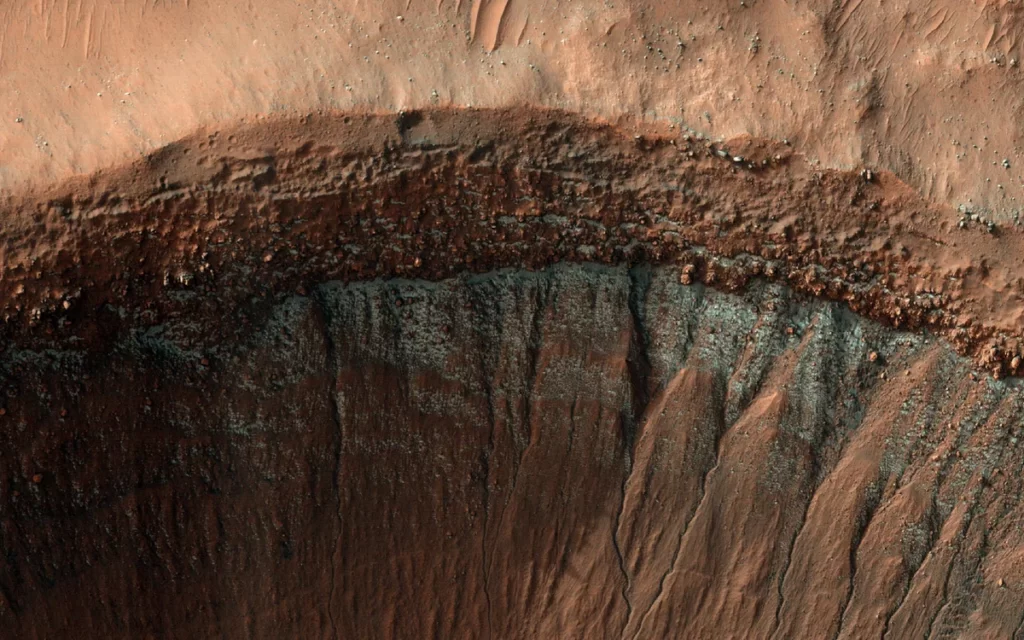
The HiRISE camera took a picture of the rim of the crater in the middle of winter. on the south slope of the crater, which receives less sunlight, formed mottled bright frost, which is visible in blue in this image from improved colors. Photo: NASA/JPL-Caltech/University of Arizona.
It is noteworthy that it was such an apparatus that at one time made it possible to detect carbon dioxide snow falling to the Earth.
In addition, back in 2008, NASA landed the Phoenix spacecraft. only 1600 km from the north pole of Mars, where laser instrumentation, snow from water ice was detected falling to the surface planets.
We are all used to the fact that snowflakes are under high magnification. have a hexagonal shape. But as we have already understood, the surface of Mars in mainly reaches snow from dry ice. But it has the shape of a cube, and thanks to a device such as the Mars Climate Sounder, scientists are confident that such snowflakes will be less than the width of a human hair.
At the same time, as scientists note, the formation of frost on the surface planet occurs much more often and occurs much more widely on the surface of the planet.
NASA's Odyssey Orbiter also observed frost forming on the morning Sun. 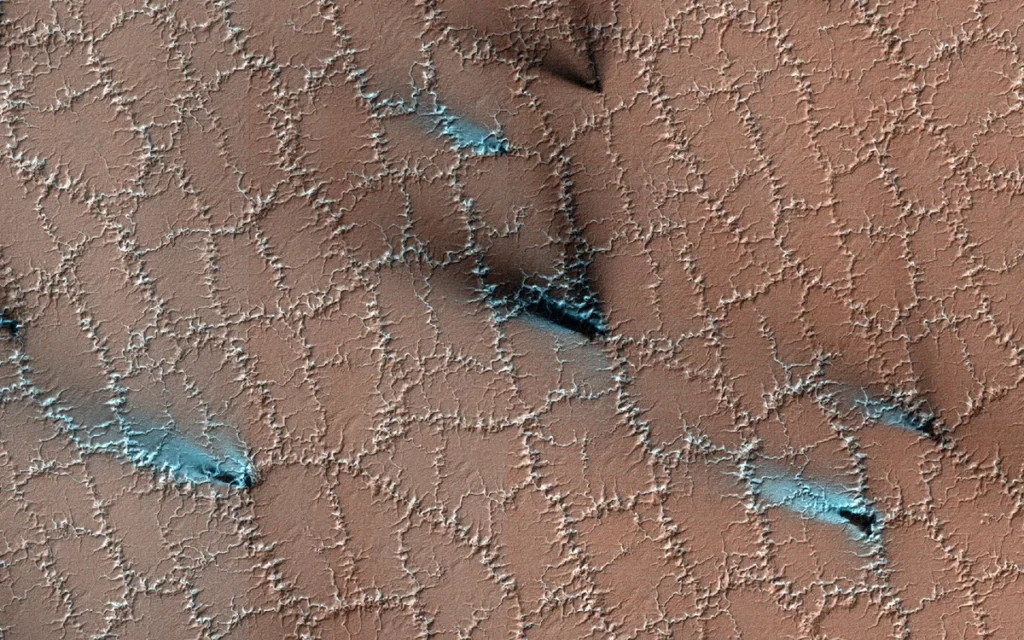

HiRISE captured this spring scene when wateroh ice, frozen in the soil, split the earth into polygons. translucent ice from carbon dioxide transmits sunlight and heats gases, exiting through the ventilation holes, releasing to the surface fans of darker material (shown in blue on this image with enhanced colors). Credit: NASA/JPL-Caltech/University of Arizona.
But the most unusual and truly colorful sight on Mars happens when spring comes. When the ice accumulated over the winter starts to melt. At the same time, the ice begins to acquire really bizarre shapes that vaguely resemble "spiders, Swiss cheese, Dalmatian spots, etc.”
Also, this process of "melting" provokes the eruption of geysers, since translucent ice allows the sun's rays to heat the gas, located under it. And in the end it (gas) breaks out, throwing columns of dust into the atmosphere.
This is such an unusual winter on Mars.





















